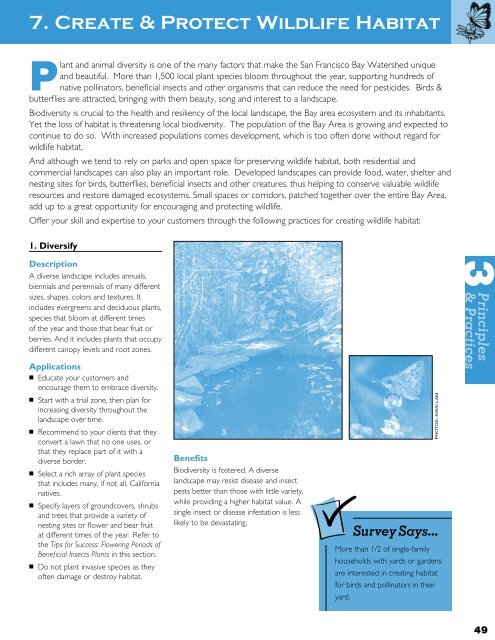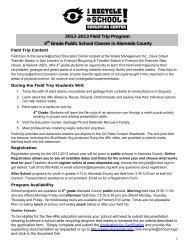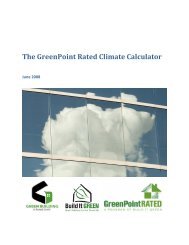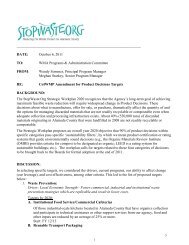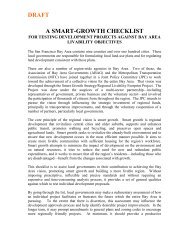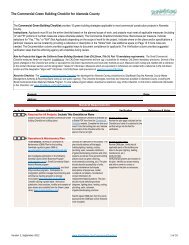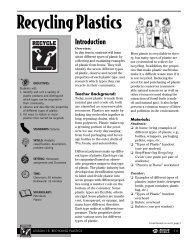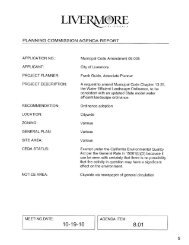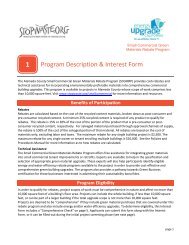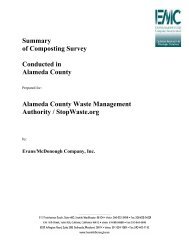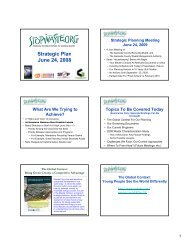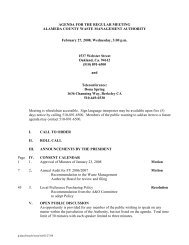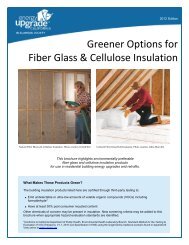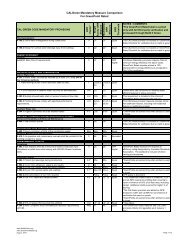Bay-Friendly Landscaping Principles and Practices - StopWaste.org
Bay-Friendly Landscaping Principles and Practices - StopWaste.org
Bay-Friendly Landscaping Principles and Practices - StopWaste.org
Create successful ePaper yourself
Turn your PDF publications into a flip-book with our unique Google optimized e-Paper software.
7. Create & Protect Wildlife Habitat<br />
Plant <strong>and</strong> animal diversity is one of the many factors that make the San Francisco <strong>Bay</strong> Watershed unique<br />
<strong>and</strong> beautiful. More than 1,500 local plant species bloom throughout the year, supporting hundreds of<br />
native pollinators, beneficial insects <strong>and</strong> other <strong>org</strong>anisms that can reduce the need for pesticides. Birds &<br />
butterflies are attracted, bringing with them beauty, song <strong>and</strong> interest to a l<strong>and</strong>scape.<br />
Biodiversity is crucial to the health <strong>and</strong> resiliency of the local l<strong>and</strong>scape, the <strong>Bay</strong> area ecosystem <strong>and</strong> its inhabitants.<br />
Yet the loss of habitat is threatening local biodiversity. The population of the <strong>Bay</strong> Area is growing <strong>and</strong> expected to<br />
continue to do so. With increased populations comes development, which is too often done without regard for<br />
wildlife habitat.<br />
And although we tend to rely on parks <strong>and</strong> open space for preserving wildlife habitat, both residential <strong>and</strong><br />
commercial l<strong>and</strong>scapes can also play an important role. Developed l<strong>and</strong>scapes can provide food, water, shelter <strong>and</strong><br />
nesting sites for birds, butterflies, beneficial insects <strong>and</strong> other creatures, thus helping to conserve valuable wildlife<br />
resources <strong>and</strong> restore damaged ecosystems. Small spaces or corridors, patched together over the entire <strong>Bay</strong> Area,<br />
add up to a great opportunity for encouraging <strong>and</strong> protecting wildlife.<br />
Offer your skill <strong>and</strong> expertise to your customers through the following practices for creating wildlife habitat:<br />
1. Diversify<br />
Description<br />
A diverse l<strong>and</strong>scape includes annuals,<br />
biennials <strong>and</strong> perennials of many different<br />
sizes, shapes, colors <strong>and</strong> textures. It<br />
includes evergreens <strong>and</strong> deciduous plants,<br />
species that bloom at different times<br />
of the year <strong>and</strong> those that bear fruit or<br />
berries. And it includes plants that occupy<br />
different canopy levels <strong>and</strong> root zones.<br />
Applications<br />
n Educate your customers <strong>and</strong><br />
encourage them to embrace diversity.<br />
n Start with a trial zone, then plan for<br />
increasing diversity throughout the<br />
l<strong>and</strong>scape over time.<br />
n Recommend to your clients that they<br />
convert a lawn that no one uses, or<br />
that they replace part of it with a<br />
diverse border.<br />
n Select a rich array of plant species<br />
that includes many, if not all, California<br />
natives.<br />
n Specify layers of groundcovers, shrubs<br />
<strong>and</strong> trees that provide a variety of<br />
nesting sites or flower <strong>and</strong> bear fruit<br />
at different times of the year. Refer to<br />
the Tips for Success: Flowering Periods of<br />
Beneficial Insects Plants in this section.<br />
n Do not plant invasive species as they<br />
often damage or destroy habitat.<br />
Benefits<br />
Biodiversity is fostered. A diverse<br />
l<strong>and</strong>scape may resist disease <strong>and</strong> insect<br />
pests better than those with little variety,<br />
while providing a higher habitat value. A<br />
single insect or disease infestation is less<br />
likely to be devastating.<br />
Survey Says...<br />
More than 1/2 of single-family<br />
households with yards or gardens<br />
are interested in creating habitat<br />
for birds <strong>and</strong> pollinators in their<br />
yard.<br />
photos: kwai lam<br />
3 <strong>Principles</strong><br />
& <strong>Practices</strong><br />
49


